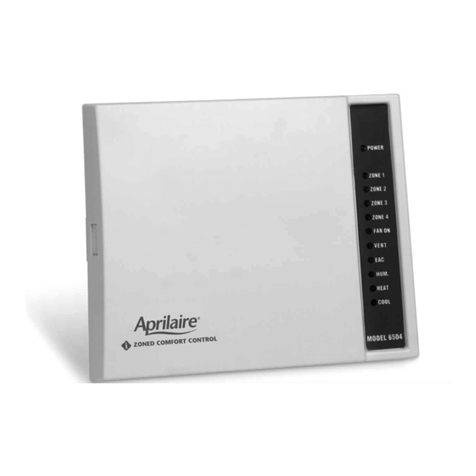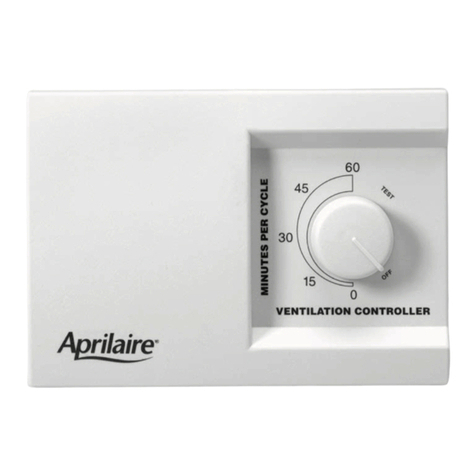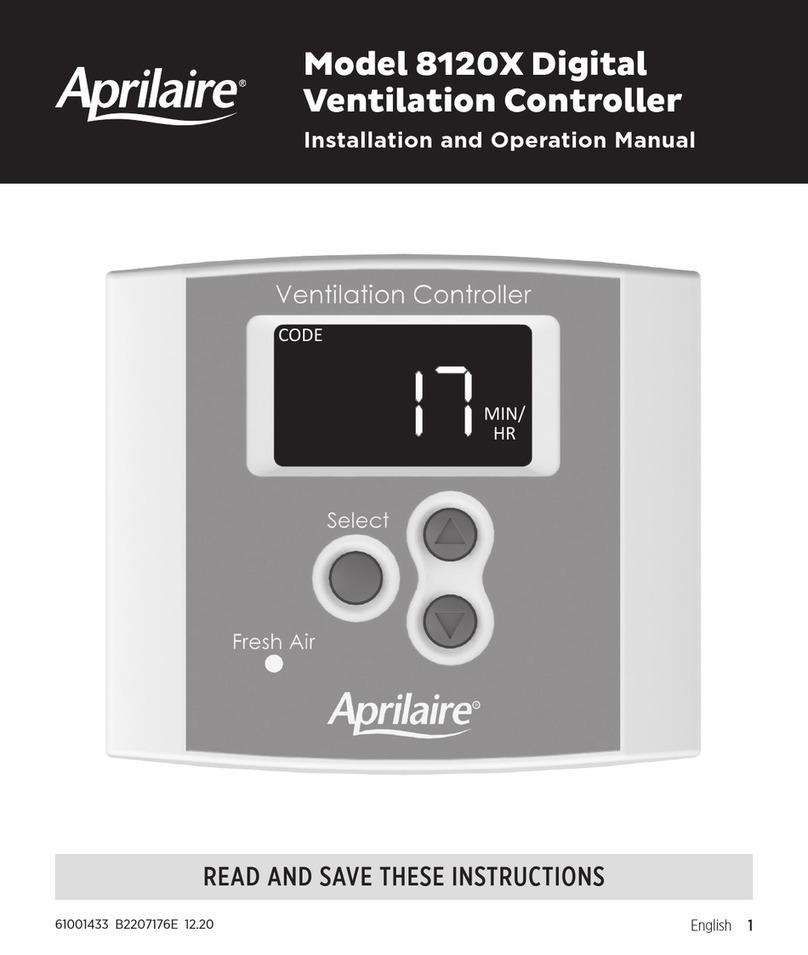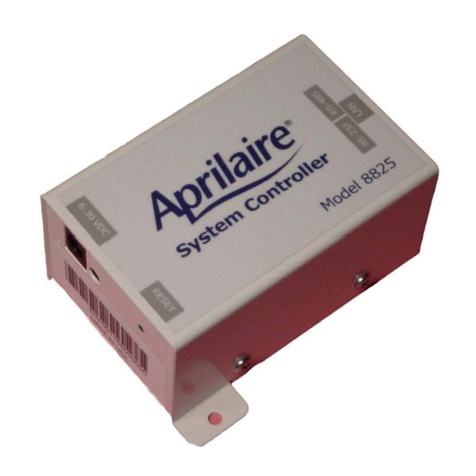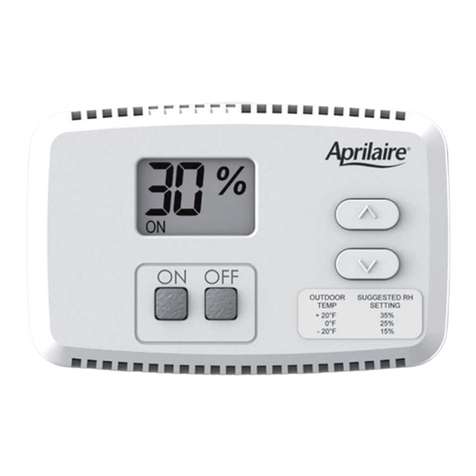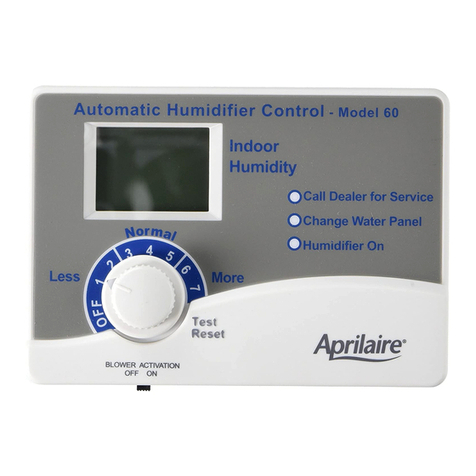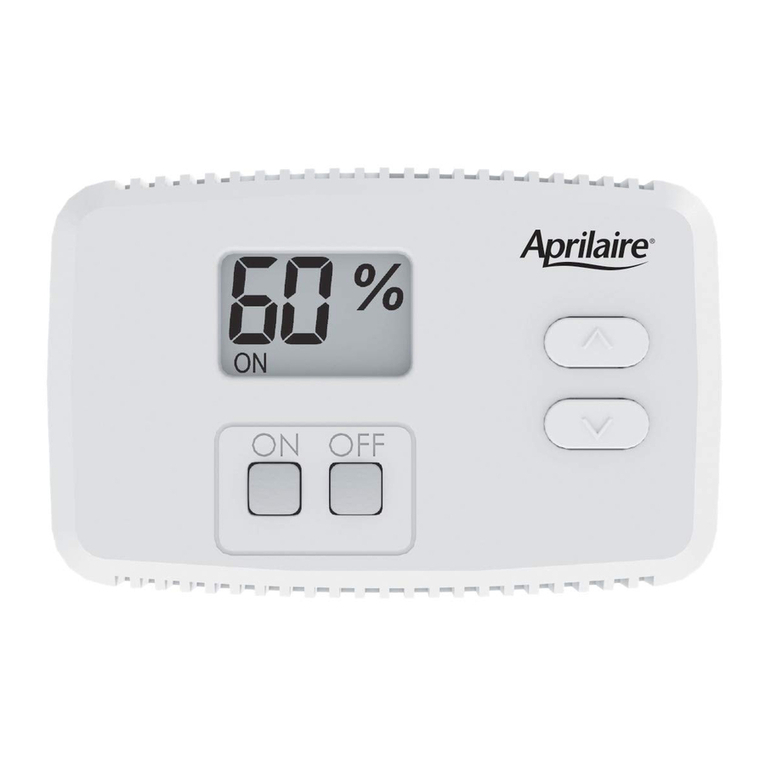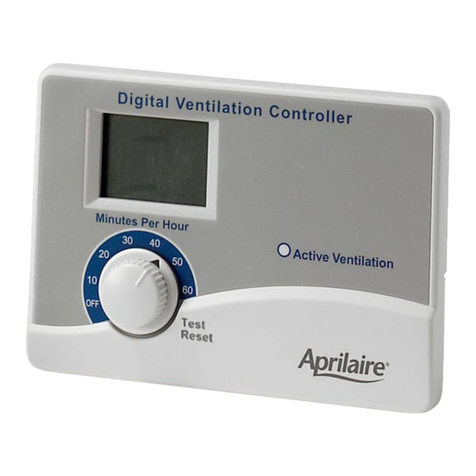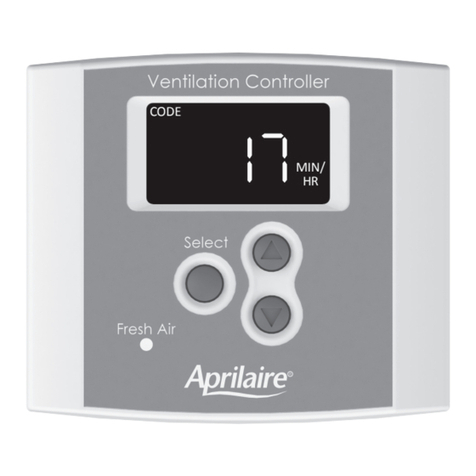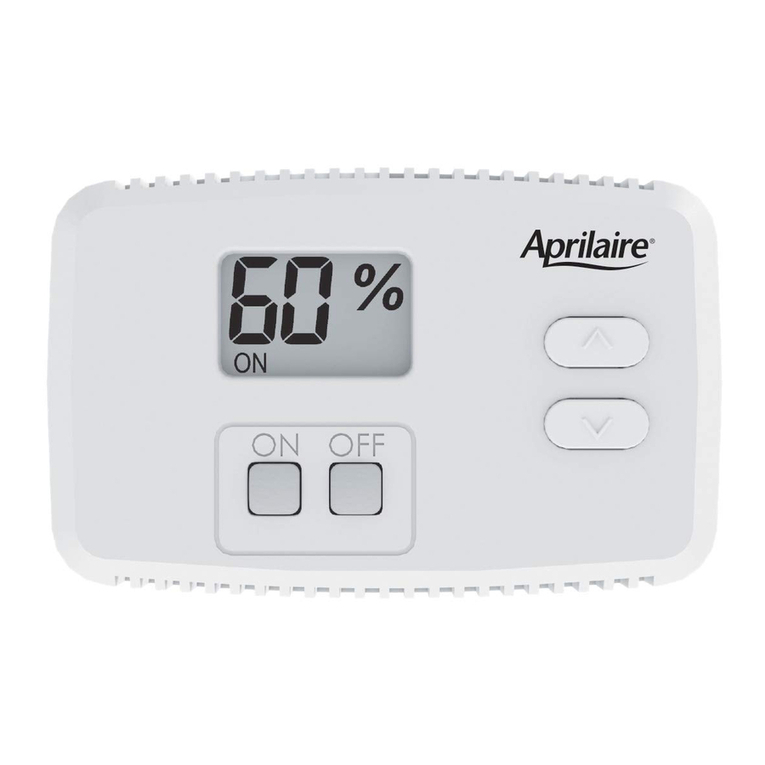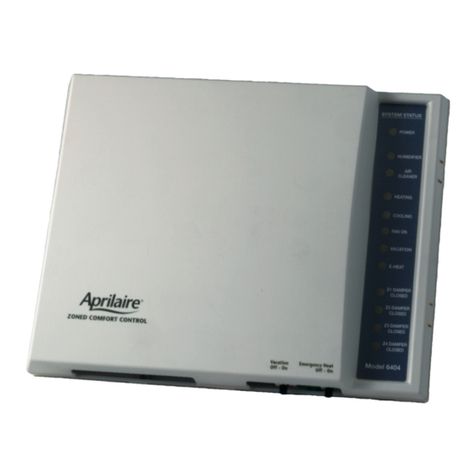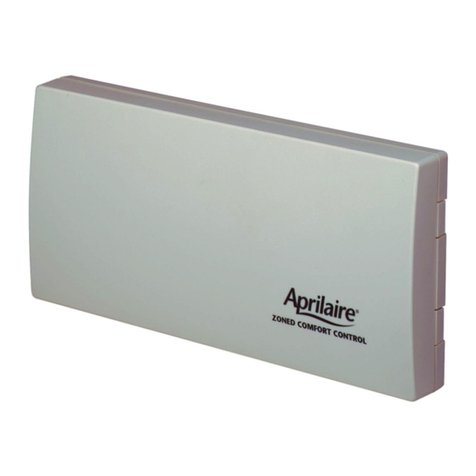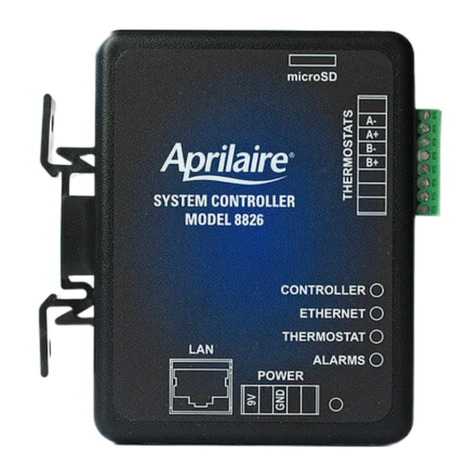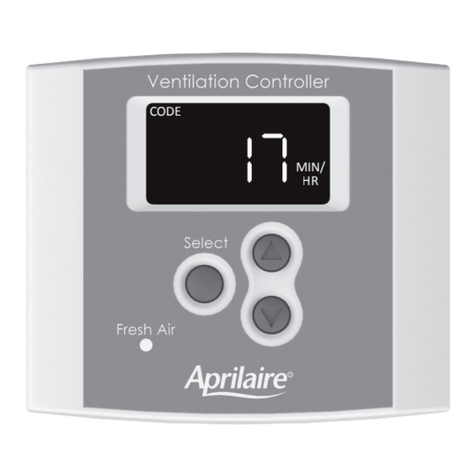TABLE OF CONTENTS
Safety Instructions.................. 1
Overview .......................... 3
Specifications...................... 3
Location Recommendations ......... 4
Installation
Mount Control . . . . . . . . . . . . . . . . . . . . . 5
Replacing a 1730A
Manual Dehumidistat ............. 6
Wiring to 1730A ................... 8
Wiring to 1710A/1750A/1770A
External Control .................. 9
Wiring to 1830/1850/1870
External Control ................. 10
Wiring to 1710A/1750A/1770A
Remote Control ................. 12
Wiring to 1830/1850/1870
Remote Control ................. 13
System Checkout
Power Up ........................ 15
Test Mode ....................... 17
Humidity/Dryness Level Setting...... 17
Offset ........................... 17
Turning On and Setting the Control ... 18
Sequence of Operation
External Control ................. 19
Remote Control ................. 19
Troubleshooting
Error Codes
External Control ................. 20
Remote Control ................. 20
Troubleshooting Guide.............. 23
OVERVIEW
The Aprilaire®Model 76 Dehumidifier Control provides control of the dehumidifier from the
living space.
The control can be installed as an EXTERNAL CONTROL, allowing the homeowner to set and
adjust the humidity setting and turn dehumidification on or off from a convenient location. In
this application, the Model 76 uses an onboard sensor to monitor the relative humidity (%RH)
in the space in which it is located and displays the measured relative humidity on the digital
display.
The control can also be installed to function as a REMOTE CONTROL if the dehumidifier
is located where it is not easy or convenient to access. This option is only available with
Aprilaire Dehumidifier Models 1710A, 1750A, 1770A, 1830, 1850 and 1870. The control can
be installed in any location within the living space, with the dehumidifier installed in the
area to be dehumidified, such as a crawl space, sealed attic, or basement. The dryness level
is set on the control and communicated to the dehumidifier. The dehumidifier communicates
the measured relative humidity in the space being dehumidified back to the Model 76 Control
where it is displayed on the digital display.
ELECTRICAL External Remote
Input Voltage and Current Voltage: 24VAC +/-20%
Current: 25mA (nominal),
50mA (max.) at 24VAC
Voltage: 9VDC (supplied by
dehumidifier control board)
Output Dry Contact, Normally Open Communication
SPECIFICATIONS
CONTROL External Remote
Control Range 40% – 80% RH 1 (less dry) – 7 (more dry)
65°F – 40°F Dew Point
Accuracy +/-5% RH
See Dehumidifier Specifications
Differential 3%
Low Limit 40°F Dew Point 50°F Dry Bulb
High Limit 99°F Dry Bulb 105°F Dry Bulb
32
